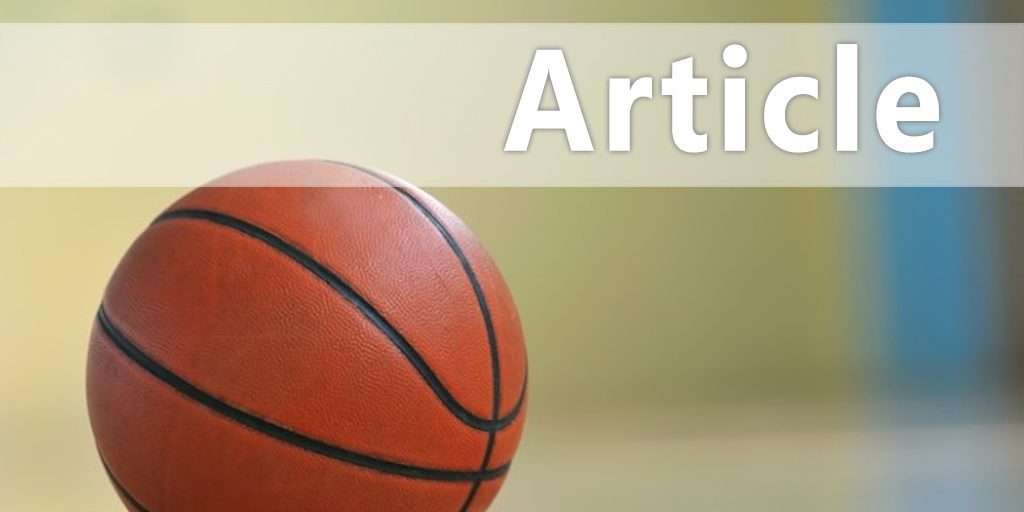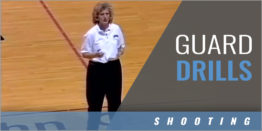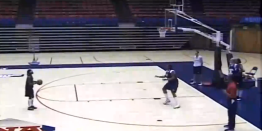| Rebouding
Similar to many aspects of the game of basketball, coaches have varied approaches to rebounding. Whatever a coach decides, however, a need exists for consistency of approach. The primary responsibility of a defensive rebounder is simply to keep the defensive rebounder's body between the ball and the offensive rebounding opponent. If possible, the defensive screen should be executed six or more feet from the basket. A fundamental precept of ball recovery is that the defensive rebounder should be at approximately a 40-degree angle as the recovery of the ball occurs. Again, why? The angle keeps the recovery protected as the descent begins. Only by fouling the defensive rebounder can the offensive rebounder touch the ball. Without the proper body angle, the defender often has the ball legally stripped as the opposing rebounder descends. The mechanics vary slightly with each defensive rebounder as they apply the position and responsibility. Playing and screening a shooter will differ from that of the weak side, backline defender, who also must give help defense to the defensive post players. Obviously, the distances vary to a great degree between the player on the shooter and the player giving help. The center of post player has a different problem from the other two. The responsibilities and mechanics as they apply to the various positions are discussed in the following sections. On-the-Ball or the Shooter Off-the-ball rebounding demands much more movement, as the distance between the defensive rebounder and the offensive rebounder can vary from several feet to fifteen or more feet. The backline defensive rebounder must take up much of this slack so the contact and position from the basket allows for the proper body angle and recovery. The Center or Post Defensive Rebounding As a result, the defensive player will have to jump up and backwards to rebound. This backward movement will often be employed to compensate for any size advantage the opponent may have. In reality, however, it is very difficult to leap if the body is going backward. Because basketball is described as a game of incidental contact, this kind of contact is permitted, assuming it isn't excessive. This interpretation refers to a description by Dr. Henry C. Carlson, a famous Pittsburgh coach of decades ago who was responsible for its inclusion into basketball's rule book. It replaced Dr. Naismith's original description that basketball is a non-contact sport. Dr. Carlson was appalled at the ticky-tac rebounding calls that were being called. The changed wording reduced fouls on rebounding by a great degree. It's another example of how important coaches are and have been to the constant growth and popularity of basketball. Imbalances must be identified and corrected. Always remember, the game of basketball is an inexact science. It needs constant monitoring. The Do's and Don'ts of Rebounding Do's
Don'ts
Summary – Rebounding Drills should be employed throughout the season to emphasize the importance of good rebounding. Because slippage often occurs due to neglect, coaches should physically review the essential mechanics of sound rebounding throughout the season. Pete Newell's Defensive Basketball: Winning Technquies and Strategies book is published |
|
|





